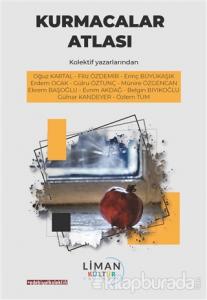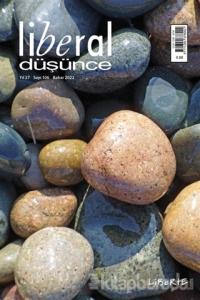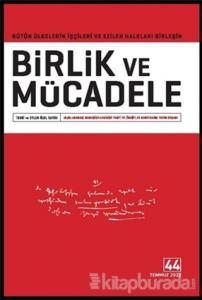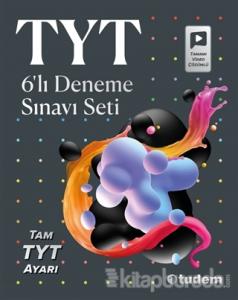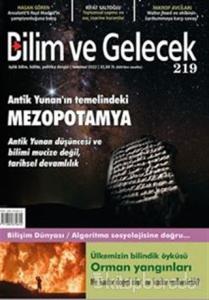Saltanatın Dervişleri Dervişlerin Saltanatı / The Dervishes of Sovereignty The Sovereignty of Dervishesİstanbul'da Mevlevilik / The Mevlevi Order in İstanbul

Mevlana Celaleddin-i Rumî'nin 800. doğum yıldönümü nedeniyle Unesco'nun 2007 yılını bu büyük mutasavvıfa ayırmasından yola çıkarak, İstanbul Araştırmaları Enstitüsü, İstanbul'un tasavvuf tarihine ışık tutmak ve Mevlana'yı bir kez daha saygıyla anmak amacıyla Saltanatın Dervişleri, Dervişlerin Saltanatı: İstanbul'da Mevlevîlik sergisini Kasım 2007'de hazırladı. 13. yüzyıl sonlarında, toplumsal ve kültürel kökleri açısından İslam ortaçağına ait mistik bir kurum olan Mevlevîlik, Fatih Sultan Mehmed'in İstanbul'u fethiyle Konya'dan İstanbul'a uzanan yolda, İstanbul'un Avrupa rönesansına dönük yüzü nedeniyle Dünya üzerindeki yerini alır. Yüzyıllar boyunca süren tarihsel süreklilik içinde, Asya kökenli bir zihniyet olmaktan, Doğu-Batı arasında entelektüel ve tinsel bir köprü olmaya giden Mevlevîlik, 1491'de kurulan Galata Mevlevîhanesi'yle birlikte Balkanlar ve Akdeniz coğrafyasına yayılma imkanı bulur ve ardından, İstanbul Mevleviliği'nin temelleri 17. yüzyıl ortalarından itibaren İstanbul'daki Mevlevî şeyh aileleri tarafından atılır. Sözün zerafetini, kalbin evrenselliğini ve ruhun yüceliğini temsil eden İstanbul Mevlevîleri, ortaçağ tasavvuf kültürü içinde şekillenmiş Mevlevî sembolizmini, gündelik hayatın dokusuna yayarak, maddeye ruh veren çabayla, giyim kuşamdan sıradan eşyaya, sanat eserinden konuşma diline kadar geniş bir kültür yelpazesinin mimarları olmuşlardır. İstanbul Araştırmaları Enstitüsü, Osmanlı İmparatorluğu'nun görsel arşivinde önemli bir yer tutan İstanbul Mevlevîliği'ne ait levha, gravür, fotoğraf ve gündelik hayata ilişkin objelerden oluşan, küratörlüğünü Ekrem Işın'ın, danışmanlığını Prof. M. Baha Tanman'ın yaptığı Saltanatın Dervişleri, Dervişlerin Saltanatı: İstanbul'da Mevlevîlik sergisi ve kataloğuyla, sema eden, ney üfleyen dervişlerin büyülü, evrenine doğru gizemli bir yolculuğa çıkıyor.
Due to Unesco's designation of 2007 as the 800th anniversary of Mevlana Celaleddin-i Rumî's (1207- 1273) birth, İstanbul Research Institute prepared the exhibition The Dervishes of Sovereignty, The Sovereignty of Dervishes: The Mevlevî Order in İstanbul, in order to shed light upon the Sufi history of İstanbul and to commemorate once again the life of Rumi. A mystical institution of medieval Islam at the end of 13th century with respect to its social and cultural roots, the Mevlevî Order assumes its unique place in the world due to İstanbul's close interaction with the Renaissance in Europe and embarks upon a journey that leads from Konya to İstanbul, upon Sultan Mehmed II's conquest of the latter. As part of the historical continuum that lasts for centuries, the Mevlevî Order is transformed from an Eastern mentality to becoming the epitome of an intellectual and spiritual bridge between the East and the West. Following the inauguration of the Galata Mevlevî Lodge in 1491, although the Order finds the opportunity to expand into the Balkan and Mediterranean geography, the Mevlevî sheikh families of İstanbul lay the foundations of the İstanbul Mevlevî Order as of the mid-17th century. Representing the chivalry of word, the universality of heart, and the sanctity of spirit, the Mevlevîs of İstanbul weave the Mevlevî symbolism, which has been shaped in the medieval mystical culture of Islam, into the texture of daily life. In an effort to give spirit to matter, these unique men are the architects of a vast cultural spectrum that ranges from clothing to ordinary objects and from works of art to colloquial language. Brought to life through the collaborative efforts of exhibition curator Ekrem Işın and exhibition consultant Prof. M. Baha Tanman and comprised of levhas (panels), engravings, photographs, and daily objects, which constitute an important part of the visual archives of the Ottoman Empire, The Dervishes of Sovereignty, The Sovereignty of Dervishes: The Mevlevî Order in İstanbul exhibition and its catalogue is a mystical journey into the ney-playing, whirling dervishes.
- Açıklama
Mevlana Celaleddin-i Rumî'nin 800. doğum yıldönümü nedeniyle Unesco'nun 2007 yılını bu büyük mutasavvıfa ayırmasından yola çıkarak, İstanbul Araştırmaları Enstitüsü, İstanbul'un tasavvuf tarihine ışık tutmak ve Mevlana'yı bir kez daha saygıyla anmak amacıyla Saltanatın Dervişleri, Dervişlerin Saltanatı: İstanbul'da Mevlevîlik sergisini Kasım 2007'de hazırladı. 13. yüzyıl sonlarında, toplumsal ve kültürel kökleri açısından İslam ortaçağına ait mistik bir kurum olan Mevlevîlik, Fatih Sultan Mehmed'in İstanbul'u fethiyle Konya'dan İstanbul'a uzanan yolda, İstanbul'un Avrupa rönesansına dönük yüzü nedeniyle Dünya üzerindeki yerini alır. Yüzyıllar boyunca süren tarihsel süreklilik içinde, Asya kökenli bir zihniyet olmaktan, Doğu-Batı arasında entelektüel ve tinsel bir köprü olmaya giden Mevlevîlik, 1491'de kurulan Galata Mevlevîhanesi'yle birlikte Balkanlar ve Akdeniz coğrafyasına yayılma imkanı bulur ve ardından, İstanbul Mevleviliği'nin temelleri 17. yüzyıl ortalarından itibaren İstanbul'daki Mevlevî şeyh aileleri tarafından atılır. Sözün zerafetini, kalbin evrenselliğini ve ruhun yüceliğini temsil eden İstanbul Mevlevîleri, ortaçağ tasavvuf kültürü içinde şekillenmiş Mevlevî sembolizmini, gündelik hayatın dokusuna yayarak, maddeye ruh veren çabayla, giyim kuşamdan sıradan eşyaya, sanat eserinden konuşma diline kadar geniş bir kültür yelpazesinin mimarları olmuşlardır. İstanbul Araştırmaları Enstitüsü, Osmanlı İmparatorluğu'nun görsel arşivinde önemli bir yer tutan İstanbul Mevlevîliği'ne ait levha, gravür, fotoğraf ve gündelik hayata ilişkin objelerden oluşan, küratörlüğünü Ekrem Işın'ın, danışmanlığını Prof. M. Baha Tanman'ın yaptığı Saltanatın Dervişleri, Dervişlerin Saltanatı: İstanbul'da Mevlevîlik sergisi ve kataloğuyla, sema eden, ney üfleyen dervişlerin büyülü, evrenine doğru gizemli bir yolculuğa çıkıyor.
Due to Unesco's designation of 2007 as the 800th anniversary of Mevlana Celaleddin-i Rumî's (1207- 1273) birth, İstanbul Research Institute prepared the exhibition The Dervishes of Sovereignty, The Sovereignty of Dervishes: The Mevlevî Order in İstanbul, in order to shed light upon the Sufi history of İstanbul and to commemorate once again the life of Rumi. A mystical institution of medieval Islam at the end of 13th century with respect to its social and cultural roots, the Mevlevî Order assumes its unique place in the world due to İstanbul's close interaction with the Renaissance in Europe and embarks upon a journey that leads from Konya to İstanbul, upon Sultan Mehmed II's conquest of the latter. As part of the historical continuum that lasts for centuries, the Mevlevî Order is transformed from an Eastern mentality to becoming the epitome of an intellectual and spiritual bridge between the East and the West. Following the inauguration of the Galata Mevlevî Lodge in 1491, although the Order finds the opportunity to expand into the Balkan and Mediterranean geography, the Mevlevî sheikh families of İstanbul lay the foundations of the İstanbul Mevlevî Order as of the mid-17th century. Representing the chivalry of word, the universality of heart, and the sanctity of spirit, the Mevlevîs of İstanbul weave the Mevlevî symbolism, which has been shaped in the medieval mystical culture of Islam, into the texture of daily life. In an effort to give spirit to matter, these unique men are the architects of a vast cultural spectrum that ranges from clothing to ordinary objects and from works of art to colloquial language. Brought to life through the collaborative efforts of exhibition curator Ekrem Işın and exhibition consultant Prof. M. Baha Tanman and comprised of levhas (panels), engravings, photographs, and daily objects, which constitute an important part of the visual archives of the Ottoman Empire, The Dervishes of Sovereignty, The Sovereignty of Dervishes: The Mevlevî Order in İstanbul exhibition and its catalogue is a mystical journey into the ney-playing, whirling dervishes.
- Yorumlar
- Yorum yazBu kitaba henüz kimse yorum yapmamıştır.

